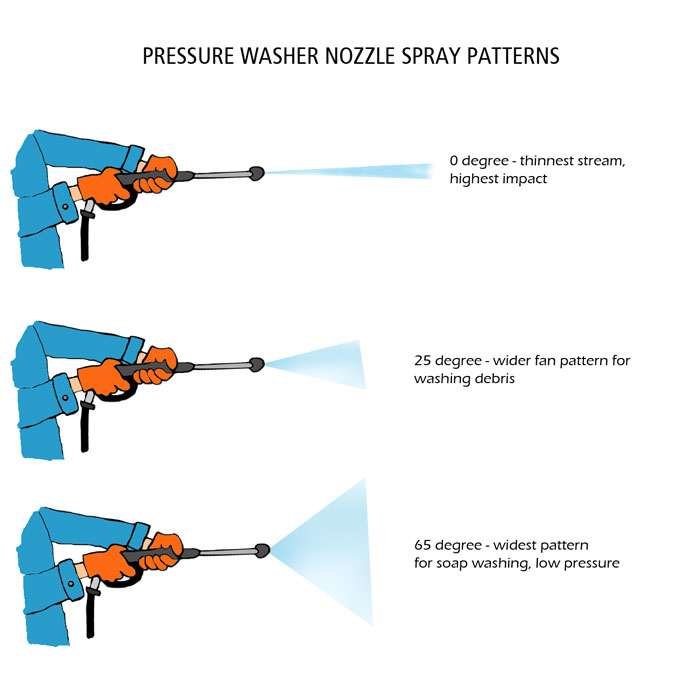
Hi there, I am back to tell you more about pressure washers. As I was telling you in the first part, a friend of mine knows quite a bit about pressure washers and decided to teach me about them. I happily agreed, and I spent a few afternoons with him and picked up quite a bit about pressure washers. Considering I had started off with absolutely no idea about pressure washers, it was quite good progress in just a week or two. I hope this electric pressure washers buy and use guide is super useful for you.
Let me begin with the stuff I was talking about in the first part – the PSI, GPM and CU.
To tell you in simple terms they actually mean the force with which the water comes out of the nozzle, the amount of water that should be flowing in the hose for the power washer to operate and finally the cleaning strength of the spray of water.
Sounds much simpler, doesn’t it? Now, let me explain it a little more. PSI stands for Pounds per Square Inch. It is the force with which the water jet comes out. Imagine a water jet aimed at a weighing machine, if it hits a square inch of area and the reading says 100 pounds, then the PSI is 100.
Most electric pressure washers have a PSI of about 1,200 to 1,900 PSI. The gas ones have a higher PSI that usually goes up to about 4000.
GPM is Gallons Per Minute. Different pressure washers have different GPM requirements. Usually for the electric ones it is around 1.5 to 2 GPM. The high flow models can have GPM from 2 to 4.

CU stands for Cleaning Units, and is a measure of how fast and efficiently the machine will clean. The CU is obtained by multiplying the PSI and the GPM. Make sense because the amount of water that comes out of the pressure washer (the GPM) and how forcefully it comes out (PSI) together will determine how efficiently and fast it will clean.
I do hope the three things that all pressure washer specs talk about are clear to you now.
I will touch upon one more thing in this post, and that is the degree of the nozzle. In most electric pressure washers there is one nozzle and it is twisted to change the degree of the nozzle. In the more heavy gas pressure washers, the nozzles can be changed as per the requirement. As a simple thumb rule, the higher the degree, the lesser the pressure and the wider the spray spreads out.
Thus at 65 degree, the spray spread out quite wide and the pressure is low. This nozzle is usually for giving a soap wash at low pressure. The 40 degree nozzle has the broadest spray pattern, and is the best option for pressure washing at home. The 25 degree one is narrower and deliver greater cleaning force. The zero degree is the narrowest and has maximum cleaning power, and is used only for the toughest cleaning jobs. It is always recommended to start with the 40 degree option and work your way to the lower degree nozzles if there is a need.
Here is a diagram that shows the spray pattern for the different nozzles.

Before I end the second part of the post, I want to give you a very important tip. Don’t go too much by how much cleaning power the pressure washers delivers, instead go by what you need the pressure washer for, and then decide the range of cleaning power your pressure washer should have. For most regular household cleaning jobs, anything around 1300 PSI is fine.
Hey, thanks for reading and catch you again soon.
PS – If you’re ready to have a look at a few cool Electric Pressure Washers, check these four out –
AR Blue Clean AR383 1,900 PSI 1.5 GPM 14 Amp Electric Pressure Washer with Hose Reel Campbell Hausfeld PW182501AV Electric Pressure Washer, 1900 psi
Karcher K 2.300 1600PSI 1.25 GPM Electric Pressure Washer, Yellow
Sun Joe SPX3000 2030 PSI 1.76 GPM Electric Pressure Washer, 14.5-Amp
.

Leave a Reply